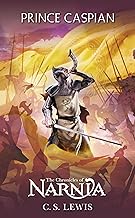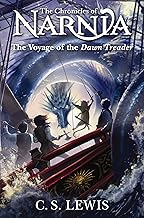
How to Read C.S. Lewis's Books on Reading order
How to Read C.S. Lewis's Books on Reading Order
Estimated Reading Time: 10-12 minutes
Introduction
C.S. Lewis, a towering figure in 20th-century literature and Christian apologetics, is best known for his imaginative storytelling and profound philosophical insights. Born in 1898 in Belfast, Northern Ireland, Lewis experienced a transformation from atheism to Christianity, which deeply influenced his writing. His works, particularly the beloved "Chronicles of Narnia" series, offer rich narratives that explore themes of morality, faith, and the human experience.
Understanding the reading order of Lewis's books, especially within the Narnia series, is crucial for grasping the evolution of his themes and ideas. Each book not only stands alone as a captivating tale but also contributes to a larger narrative arc that reflects Lewis's thoughts on faith, courage, and the quest for meaning. This guide will help you navigate through three key works: "The Lion, the Witch and the Wardrobe," "Prince Caspian," and "The Voyage of the Dawn Treader," providing insights into their significance and how they interconnect.
Why C.S. Lewis's Perspective Matters
C.S. Lewis's approach to storytelling is distinctive for its blend of fantasy and philosophical inquiry. Unlike many contemporaries, Lewis seamlessly integrates moral and spiritual questions within engaging narratives, making complex ideas accessible to readers of all ages. His unique insights into the human condition, the nature of good and evil, and the importance of faith resonate deeply, offering timeless wisdom that continues to inspire.
Lewis's perspective is particularly significant in a world often characterized by skepticism and disillusionment. His works encourage readers to explore their beliefs and values, fostering a sense of wonder and curiosity. By examining the fantastical worlds he creates, readers can engage with profound philosophical concepts in a relatable manner. The lasting impact of Lewis's ideas is evident not only in literature but also in the realms of theology and philosophy, where his thoughts continue to spark discussions and reflections.
Overview of Recommended Books
The Lion, the Witch and the Wardrobe
Main Themes and Arguments
"The Lion, the Witch and the Wardrobe" introduces readers to the magical land of Narnia, where four siblings—Peter, Susan, Edmund, and Lucy—embark on a journey to free the kingdom from the grip of the White Witch. Central themes include the battle between good and evil, redemption, and the significance of sacrifice. The character of Aslan, a lion representing Christ, embodies the themes of resurrection and hope.
Historical Context and Significance
Published in 1950, this book emerged in a post-World War II context, reflecting a world grappling with moral complexities and the consequences of tyranny. Lewis's narrative serves as an allegory for the Christian faith, inviting readers to explore deeper moral truths amidst the enchanting backdrop of Narnia.
Key Insights and Takeaways
- Redemption is Possible: Edmund's betrayal and subsequent redemption illustrate the transformative power of forgiveness.
- Courage in Adversity: The Pevensie siblings' bravery in confronting evil serves as a reminder of the importance of standing firm in one's beliefs.
- Faith and Trust: Lucy's unwavering faith in Aslan encourages readers to trust in a higher power, even when circumstances seem dire.
Why Read This Book
This book is essential for understanding the foundational themes of the Narnia series and Lewis's broader philosophical inquiries. It appeals to readers seeking adventure, moral lessons, and a deeper understanding of faith.
Prince Caspian
Main Themes and Arguments
"Prince Caspian" continues the saga of the Pevensie siblings as they return to Narnia to aid Prince Caspian in reclaiming his throne from his usurping uncle, King Miraz. Themes of rightful leadership, the importance of belief, and the struggle against oppression are central to this narrative.
Historical Context and Significance
Published in 1951, this sequel reflects Lewis's concerns about the loss of faith and the erosion of values in contemporary society. The struggle of the Old Narnians against the Telmarines serves as a metaphor for the fight against modernity and the importance of preserving one's heritage and beliefs.
Key Insights and Takeaways
- The Power of Belief: The Old Narnians' faith in Aslan and the return of the Pevensies underscores the importance of belief in achieving the impossible.
- Leadership and Sacrifice: Caspian's journey emphasizes that true leadership requires sacrifice and the willingness to fight for what is right.
- Rediscovering Faith: The Pevensies' gradual rediscovery of their faith in Narnia mirrors the journey of many individuals returning to their beliefs.
Why Read This Book
"Prince Caspian" is crucial for understanding the development of Narnia's political landscape and the moral complexities of leadership. It resonates with readers interested in themes of identity, faith, and the struggle for justice.
The Voyage of the Dawn Treader
Main Themes and Arguments
In "The Voyage of the Dawn Treader," the Pevensies, along with their cousin Eustace, embark on a sea voyage to find the seven lost lords of Narnia. This tale explores themes of adventure, personal growth, and the quest for knowledge and truth.
Historical Context and Significance
Published in 1952, this book reflects Lewis's fascination with exploration and the unknown, paralleling the post-war desire for discovery and renewal. The journey on the Dawn Treader symbolizes the quest for spiritual and personal enlightenment.
Key Insights and Takeaways
- Personal Transformation: Eustace's transformation from a selfish boy into a brave hero illustrates the potential for personal growth through adversity.
- The Search for Truth: The voyage emphasizes the importance of seeking knowledge and understanding beyond the surface.
- Faith in the Journey: The characters' reliance on Aslan throughout their adventures highlights the necessity of faith in navigating life's uncertainties.
Why Read This Book
"The Voyage of the Dawn Treader" is essential for understanding the transformative power of adventure and the importance of faith in personal growth. It appeals to readers seeking inspiration and insight into their own journeys.
How These Books Complement Each Other
Together, these three works create a rich tapestry of themes and ideas that build upon one another. "The Lion, the Witch and the Wardrobe" establishes the foundational narrative of Narnia, introducing key characters and themes of good versus evil. "Prince Caspian" deepens the exploration of leadership and faith, while "The Voyage of the Dawn Treader" expands the narrative into a broader quest for knowledge and personal transformation.
Reading them in sequence allows for a deeper understanding of Lewis's evolving thoughts on morality, faith, and the human experience. Each book addresses different aspects of the overarching theme of redemption and the importance of belief, creating a comprehensive exploration of Lewis's philosophical inquiries.
Who Would Benefit from Reading These Books
These works are ideal for a diverse audience:
- Students and Academics: Those studying literature, theology, or philosophy will find rich material for analysis and discussion.
- General Readers: Anyone interested in fantasy literature and moral storytelling will appreciate the depth and creativity of Lewis's narratives.
- Professionals Seeking Practical Wisdom: Individuals looking for insights into leadership, personal growth, and ethical dilemmas will find valuable lessons.
- Anyone Seeking Personal Growth: Readers on a journey of self-discovery and faith will resonate with the characters' struggles and triumphs.
Recommended Reading Order
- Start with: The Lion, the Witch and the Wardrobe - This book lays the groundwork for the Narnia series, introducing key themes and characters.
- Continue with: Prince Caspian - This sequel builds on the established themes, exploring leadership and the importance of faith in action.
- Advanced reading: The Voyage of the Dawn Treader - This book expands the narrative into a broader quest, emphasizing personal transformation and the search for truth.
Tips for Getting the Most Out of Each Book:
- Take notes on key themes and character developments as you read.
- Reflect on how each book's themes relate to your own experiences and beliefs.
- Discuss the books with others to gain different perspectives and insights.
Conclusion
C.S. Lewis's contributions to literature and philosophy are invaluable, particularly in exploring the theme of reading order through the lens of the Narnia series. His ability to weave profound moral and spiritual questions into captivating narratives makes his works timeless and relevant. As you embark on this journey through Lewis's writings, allow yourself to be inspired by the characters' struggles and triumphs, and consider how their experiences resonate with your own life.
Explore these works, engage with their themes, and let Lewis's wisdom guide you on your own quest for understanding and personal growth. Happy reading!
Tags: #C.S. Lewis #Reading order #Philosophy #ReadingGuide #ClassicLiterature #Wisdom
Featured Books

Prince Caspian
by C.S. Lewis
Published: 1951
A mass-market paperback edition of Prince Caspian, book four in the classic fantasy series The Chronicles of Narnia, featuring cover art by Cliff Nielsen and black-and-white interior illustrations by the original illustrator of Narnia, Pauline Baynes.The Pevensie siblings travel back to Narnia to help a prince denied his rightful throne as he gathers an army in a desperate attempt to rid his land of a false king. But in the end, it is a battle of honor between two men alone that will decide the fate of an entire world.Prince Caspian is the fourth book in C. S. Lewis's classic fantasy series, which has been drawing readers of all ages into a magical land where animals talk and trees walk for over sixty years. This is a stand-alone novel, but if you would like to read more of Lucy and Edmund's adventures, pick up The Voyage of the Dawn Treader, the fifth book in The Chronicles of Narnia. Read more

The Voyage of the Dawn Treader
by C.S. Lewis
Published: 1952
STEP ABOARD THE MAGNIFICENT DAWN TREADER.THE JOURNEY OF A LIFETIME IS ABOUT TO BEGIN . . .A crew of brave heroes sets sail on a voyage east beyond the edge of the world in search of the wrongfully banished seven lords of Narnia. Their quest moves into uncharted waters, bringing them face-to-face with their deepest fears—and the great dangers awaiting them on the horizon.And there is more to the adventure. The Voyage of the Dawn Treader is the fifth book in C. S. Lewis's classic fantasy series, The Chronicles of Narnia, which has captivated readers of all ages with a magical land and unforgettable characters for over seventy-five years.This is a stand-alone novel, but if you would like to return to Narnia, read The Silver Chair, the sixth book in The Chronicles of Narnia, the greatest epic fantasy series of all time.Read them all:· The Magician’s Nephew· The Lion, the Witch and the Wardrobe· The Horse and His Boy· Prince Caspian· The Voyage of the Dawn Treader· The Silver Chair· The Last Battle Read more